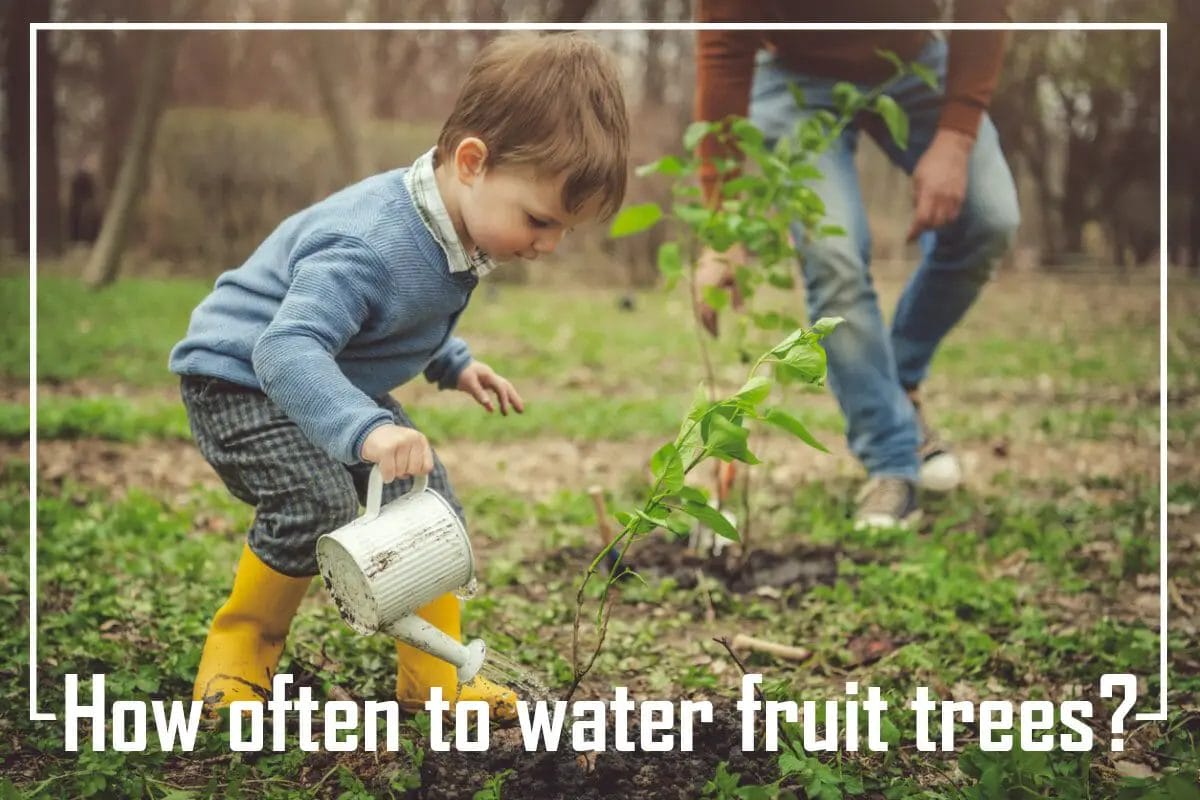Fluoride is a chemical that has been added to water since 1945, and some people argue that it is not helpful to the human body. A few countries have already banned fluoride from water, and many others, such as the United States, are considering doing so as well.
Removing fluoride from water is an individual choice as it can be seen as a violation of personal liberty, depending on how one sees it.
Many people who want to remove fluoride from their drinking water use a variety of techniques, including boiling the water or using a reverse osmosis filter. One must be careful not to swallow any parts of these filters because they may contain heavy metals, which could be harmful.
Do you know how to remove fluoride from water? If not, you are in the right place to learn the easy tips on it. People are conscious enough of the controversy surrounding the fluoridation of drinking water. This is a way to get drinking water without fluoride.
Moreover, I have got some other water purification methods that do not remove fluoride from drinking water. Now, read the article on how to remove fluoride from water to know how to do it.

Why is there Fluoride in My Water?
Fluoride is added to the water to help protect teeth from decay. Fluoride makes the surface of your tooth more resistant to acids, which are what cause cavities. Fluoride also helps to rebuild tooth enamel, which is the strong layer on your teeth.
Fluoride is effective in preventing cavities and strengthening teeth. There are some risks associated with fluoride, however. Too much fluoride can cause dental fluorosis which is the discoloration of teeth caused by too many minerals in your teeth.
Health concerns of fluoride
The negative health effects of fluoride have been studied for many years. Studies have shown that high exposure to the chemical can lead to dental fluorosis, which is discoloration or pitting of the teeth. This can happen to people who live in areas where fluoride is naturally high, but it also occurs when they are given too much toothpaste as children.
Other side effects of fluoride include bone fractures, joint pain, headaches, and nausea.
There are a number of health concerns related to the use of fluoride.
Neurological problems
Children exposed to excessive amounts of fluoride during pregnancy have higher rates of neurological disorders than those whose mothers did not consume large quantities of this mineral. These conditions include mental retardation, attention deficit disorder, hyperactivity, speech delay, autism spectrum disorder, and cerebral palsy.
In addition, there is evidence that fluoride causes brain damage in adults. Studies suggest that chronic exposure to fluoride increases the risk of Alzheimer’s disease.
Dental Fluorosis
One study found that over half of all American schoolchildren had at least mild levels of dental fluorosis. Children living near coal-fired power plants were twice as likely to develop severe forms of dental fluorosis compared to other kids.
A recent study showed that children born after 2000 experienced significantly lower incidences of dental fluorosis than previous generations. However, another study suggests that the incidence of dental fluorosis among young Americans continues to rise.

Kidney Problems
Exposure to excess fluoride through tap water can result in kidney stones. In fact, about 10% of patients treated for kidney stones have consumed fluoride-containing medications. Kidneys become damaged if you drink enough water containing fluoride. Drinking 1 liter of water per day will increase the amount of fluoride absorbed into your system.
If you do decide to stop consuming fluoride, make sure you replace it with calcium supplements. Calcium works just like fluoride does in protecting against cavities.
Thyroid problems
Some research shows that fluoride may interfere with thyroid function. If you take medication for hypothyroidism, you should talk to your doctor before stopping fluoride because it could affect your treatment plan.
Osteoporosis
People who ingest fluoride regularly experience osteopenia, which means weakened bones. Osteoporosis results when bones lose mass due to aging or certain diseases. Fluoride may contribute to weakening bones.
Neurological issues
Studies show that fluoride affects nerve cells by interfering with the production of neurotransmitters. Neurotransmitters help transmit messages between neurons. They play important roles in memory formation, mood regulation, sleep cycles, muscle control, and sensory perception.
It is believed that fluoride interferes with these functions by binding to specific receptors within the cell membrane. When fluoride binds to these sites, it prevents them from receiving signals from outside sources. As a result, communication becomes impaired.
Tooth and bone damage
There is no doubt that fluoride damages teeth and bones. The National Institute of Dental Research states: “fluoridation reduces tooth decay but also weakens bones. This effect appears to occur mainly in growing animals.”
According to the Centers for Disease Control, more than 50 million U.S. residents suffer from low bone density. Many experts believe that fluoride plays a role in causing this condition.
17 Ways to Remove Fluoride from Water
17 Ways to Remove Fluoride from WaterFluoride is a mineral chemical found in water, toothpaste, and some medicines. It’s useful for preventing cavities, but there are some problems it can cause when consumed too much.
Fluoride is a corrosive chemical, and it can cause the following problems:
Distillation
A distiller uses heat energy to separate liquids based on density. Distillers are useful when separating different types of fluids. For example, ethanol is distilled off of beer, while potable water remains undistilled.
To remove fluoride from water, distilling equipment must withstand temperatures up to 400 degrees Fahrenheit. This means that most home distillers won’t be capable of producing enough steam pressure to boil away the fluoride.
Bone Char Carbon / Brimac Char
Brimac char is made from animal bones. Bone char is porous and allows for the absorption of nutrients. It is often used to purify wastewater before being released into rivers and streams.
To remove fluoride from water, brimming char needs to be heated above 500 degrees Celsius. At these high temperatures, the organic matter within the char begins to burn. As the temperature rises, the number of ash increases until the entire mass becomes completely blackened.
Water Filter Pitcher
A water filter pitcher works by using a micron mesh to trap large particles from the water. The material is then removed and discarded. In order to remove fluoride from water, a micron mesh needs to be able to withstand temperatures up to 300 degrees Celsius.
At these high temperatures, the organic matter within the mesh begins to burn. As the temperature rises, the number of ash increases until the entire mass becomes completely blackened.
Deionizer
A deionizer is a type of ion exchange membrane that uses an electrical current to remove large ions from water. In order to remove fluoride from water, the voltage needs to be high enough for the membrane’s pores to become completely filled with water.
The charged particles are then released back into the water and begin to float around. As the particles accumulate, they form a layer of fluorine on top of the membrane. The fluoride is then removed from the water as it passes through this filter.
Treat the water with a gravity filter
A gravity filter uses a series of baffles to create a path for the water. The water is then allowed to flow through these baffles and into an underground tank. When the water reaches this tank, it flows down and out of the top of the filter.
To remove fluoride from water, the baffles must withstand temperatures up to 150 degrees Celsius. At these high temperatures, the organic matter within the baffles begins to burn. As the temperature rises, the number of ash increases until all of it becomes completely blackened.
Clean the water with tulsi or holy basil
Holy Basil is known in Ayurveda medicine as Tulsi. Tulsi helps to remove fluoride from water because its leaves contain calcium carbonate, which binds to fluoride. Holy basil also contains vitamin C, making it easier for the body to absorb the fluoride.
Remove fluoride from your tap water at home with a Reverse Osmosis System
Reverse osmosis systems work by passing water through a semi-permeable membrane. These membranes allow only certain molecules to pass while blocking other substances. They are designed to separate salt water from freshwater.
Activated Alumina
Aluminum hydroxide reacts chemically with fluoride ions to form aluminum fluoride. Aluminum fluoride is very toxic and causes severe health effects. Activated alumina is used in industrial processes with large amounts of fluoride.
Baking Soda
When baking soda comes in contact with high fluoride levels, sodium bicarbonate forms. Sodium bicarbonate is highly alkaline and can burn skin tissue. Baking soda is often recommended for removing stains from clothing. However, it cannot effectively remove fluoride from water.
Calcium Hydrogen Phosphate
When citric acid combines with calcium hydrogen phosphate, it produces calcium citrate. Citrates are acidic compounds and they react with fluoride to produce insoluble fluorosilicates. These substances remain in the mouth after brushing and eating foods rich in citrates.
Chlorine Bleach
If chlorine bleach comes into direct contact with fluoride, it will combine with the element to create hydrochloric acid. Hydrochloric acid is extremely dangerous if swallowed. Chlorine bleach is commonly used to disinfect swimming pools and other bodies of water.
Copper Sulfate
This compound dissolves copper sulfate crystals. Copper sulfate is used to treat tap water contaminated with lead. In addition, it removes iron deposits from pipes. Unfortunately, it does nothing to reduce fluoride content.
Diatomaceous Earth
This substance consists of tiny silica particles bonded together by carbon. DE works like sandpaper and it helps clean surfaces. It is effective at reducing bacteria and viruses. However, it doesn’t work against fluoride because it only scratches its surface.
Lime
Hydrated lime contains calcium hydroxide which reacts with fluoride to form calcium fluoroaluminates. Calcium fluoroaluminates are non-toxic and do not harm humans. They dissolve easily in water and leave behind harmless residues. Lime is sometimes used to neutralize acids.
Magnesium Oxide
It is possible to make magnesium oxide out of seawater. Magnesium oxide is a white powdery material that absorbs moisture. When exposed to air, it turns back into saltwater. If you add magnesium oxide to your water supply, it will absorb all of the fluorides. You should never drink the solution though.
Molasses
Sugar cane molasses contain sucrose and fructose. Sucrose breaks down into glucose and fructose during digestion. Fructose is sweeter than glucose, making sugar cane molasses more desirable to animals. Sugar cane molasses also contains minerals and vitamins. The main problem with molasses is that it may attract insects.
Peroxide
Oxidizing agents such as peroxides break apart molecules containing oxygen atoms. Peroxides are usually produced through electrolysis.
Why is Fluoride Bad?
Now the question is, is fluoride beneficial or harmful to you? For some particular situations, it may be. The condition becomes somewhat realistic if there is fluoridation in drinking water. So what is the utility of fluoride?
The only threat you face from fluoridation is ‘fluorosis’. It is a condition where the enamel of the teeth changes radically to a huge amount of fluoride inside the body.
You find no enamel in your teeth that you get just now. It affects the teeth and helps to grow. So we can say fluoride is a medical condition that affects children.
If there is fluorosis on your teeth, the developing teeth become discolored. There is an un-removable ‘stain or brown’ and yellow color on teeth. Though you brush your teeth many times, there is still a stain. So fluoride is terrible for health. It is an example of fluorosis.
Although you intake fluoride from toothpaste, the dangers of fluoride may not enter your bloodstream.
Now the question is, is fluoride toxic if someone takes it through toothpaste? It remains in your teeth though you spit it out. Here is the place where you are supposed to be.
Though you let it enter your bloodstream, your body will be benefited little. Moreover, you will suffer from the side effect of fluoride. It may seem that consuming pimple cream with phosphate fluoride. This implies that it is for your face not for your stomach.
Luckily your kidney works more to get rid of fluoride danger catches in your body. But there is a limit to what they can do.
Fortunately, you can get rid of about half the amount you digest within a few days. If you consume more fluoride, there is the possibility of fluorosis. This is the evidence that affects your thyroid gland.
Side effects of Fluoride in drinking water
The exact amount of fluoride is beneficial for dental health. On the other way, an excess amount of fluoride is harmful to teeth. It causes dental fluorosis.
More fluoride weakens bones and ligaments. Moreover, it creates a problem for the nervous system.
Fluoridealert.org reports that people having clinical signs of fluorosis may suffer from significant symptoms like overt osteoarthritis and chronic joint pain.
There has a suggested amount of fluoride level. A higher level may happen where fluoride is easily detected. Laura Pressley, Ph.D. is an anti-fluoridation advocate.
He tells Waterlogic publication that Texas has a higher natural level of calcium fluoride for geology and oil deposits.
If there is a high level of fluoride in your country or state water, removing them from the drinking water will be better. Removing it may be a good thing for the benefit of your health.
Why remove fluoride from your water?
For a long time, people think fluoride is a toxic substance. Therefore, fluoride is being used as rodenticides or pesticides.
So the Food and Drug Administration now found that the toothpaste carries a poison warning and should contact the poison controlling centers if used for brushing.
The excessive use of fluoride is the reason for painful bone disease. It also causes discoloration of your teeth, popularly known as dental fluorosis.
For a long time, fluoride exposure may cause chronic ailments like bone fragility, arthritis, glucose intolerance, dental fluorosis, gastrointestinal distress, and possibly cardiovascular syndrome plus certain kinds of cancer.
How To Remove Fluoride From Water Naturally
Though we all want to remove fluoride from water and fancy purification systems, we cannot buy the system. The natural method of removing fluoride is cheap, safe, and very effective.
A very credible discovery has undergone by researchers of the University of Rajasthan. The researchers covered 75 mg of Holy Basil leaves in 100 ml of water which included above 7.4 parts per million of fluoride.
After absorbing the leaves in water for eight hours, they found that the fluoride reduces by 1.1 parts per million. The World Health Organization admits that the safe level of fluoride in your drinking water is from 0.5 to 1 part per million.
Health Benefits
For medical purposes, dried powder and fresh leaves prepared from the tulsi plant are used as infusions, herbal teas, and tinctures. Tulsi tea holds a big amount of antioxidant and nutrient substances, takes out toxins out of the body, improves digestion, develops immunity, and relieves colds and stress has warming and calming effects. Therefore it is wise not to spend more money for removing fluoride from water.
How fluoridation works
Definitely, you have learned how fluoridation works so far. The fluoride acts by binding with the tooth enamel that is made up of hydroxyapatite, a crystal made of phosphorus, calcium, oxygen, and hydrogen by the view of American scientists.
By altering the hydroxyl molecule on hydroxylapatite, fluoride aids teeth to be constructed more resistant to the attack of acid bacteria.
Surely, how fluoride aids protect teeth and how much they save them is not clear well. The result of the thesis is that fluoride works topically at the beginning level when fluoride-rich toothpaste is used for the teeth.
Tooth decay, if keeps untreated, may be the cause of serious health hazards like infections that may spread to the jaw. In the United States, tooth decay has wonderfully declined as fluoridation started, view to the CDC.
Moreover, tooth decay is also turned down in other countries that do not fluoridate, according to the World Health Organization (WHO).
How to remove fluoride from water cheaply.
The main reason to remove fluoride from water is because of its potential health effects.
- Distill the water, collect the steam and use it for cooking.
- Boil a pot of distilled water on your stovetop, remove the lid and let cool in an uncovered container overnight (it may help if you cover it with a cloth).
- Use a filter that removes fluoride from the tap or well water.
- Add activated charcoal to your water for a short time before boiling.
- Boil with baking soda, this breaks down the fluoride so it can be filtered out.
- Add tap water to distilled or reverse osmosis (RO) water and let sit overnight. The fluoride particles should sink to the bottom and you can use a coffee filter to strain off any residue at the top of your container.
- Boil potassium permanganate solution in an uncovered pot on your stove. The fluoride will be removed from the water.
- Filter out the fluoride using charcoal or activated carbon
- Use a coffee filter to strain off any residue that remains at the top of your container.
How to remove fluoride from city water?
The city water in many areas can be fluoridated, so if you want to remove fluoride from the city water, it is best to ask your local government. The removal of fluoride will depend on the level of fluoride in your water supply.
If you have a low or medium-low level, then the government might offer to remove it for free and replace it with an alternative such as bottled water, or you might be able to use a home water filter. If your fluoride levels are high, then the government may not offer any help and it will be up to you to remove the fluoride.
How to remove fluoride from water for free?
- Boil the distilled water
- Let it cool down and pour the boiled water into a large container.
- Add some regular tap water (1 gallon) and add it in slowly until you reach 10 gallons of mixture
- Let the solution sit for at least 16 hours before using
- Pour the solution through a sieve or cheesecloth and collect the clarified liquid in another container Use the collected fluid for cooking purposes only
Does Boiling water remove fluoride?
Boiling water doesn’t remove fluoride. Many factors, such as altitude and atmospheric pressure, can affect water’s boiling point.
A study was done in Canada where researchers found the boiling point of water decreased by one degree for every 100 meters above sea level.
And remember, the higher you go up in altitude, the lower your atmospheric pressure will be. So if you’re living at an altitude of 2500 meters, the boiling point for water would be around 86 degrees Celsius.
What kind of resin is used to remove fluoride from water?
The resin used to remove fluoride from water is activated alumina. Activated alumina is a substance processed with oxygen, steam, and/or other gases to create microspheres that can absorb fluoride ions.
Activated alumina is also sometimes known as “activated charcoal” and is used in many industrial processes to remove unwanted materials from gas, liquid, or solid phases.
Does bentonite clay remove fluoride from drinking water?
Bentonite clay is a mineral used to help remove fluoride from drinking water. Bentonite clay can absorb large amounts of various substances while not changing the chemical composition of the clay.
The only problem with this is that bentonite clay has to be used in large quantities and must have a contact time of at least 24 hours before the fluoride will be removed. Bentonite clay is a type of mineral used to help remove fluoride from drinking water.
Bentonite clay can absorb large amounts of various substances while not changing the chemical composition of the clay. The only problem with this is that bentonite clay has to be used in large quantities and must have a contact time of at least 24 hours before the fluoride will be removed.
Do water purifiers remove fluoride?
Fluoride is a naturally occurring mineral found in water. The EPA does not recommend adding fluoride to public drinking water, but local municipalities commonly add it to prevent tooth decay.
Fluoride is also found in toothpaste and mouthwash, which people use to brush their teeth. Water purifiers do not remove fluoride from water, but bottled or filtered water does.
How to remove fluoride from water video:
FAQ on Fluoride
Do Brita and Pur both remove fluoride?
Does distillation remove fluoride from water?
Does reverse osmosis remove fluoride?
Does water softener remove fluoride?
Does sunlight remove fluoride from water?
Conclusion
In conclusion, I would like to say that you should drink plenty of clean, fresh water because we all need good quality water to stay healthy. However, if your city adds fluoride to its water supply, you may wish to consider removing it yourself.
You could try filtering out the fluoride with a carbon block filter or, even better, get a whole-house filtration system. This way, you won’t have to worry about what happens when you turn off the tap!
Sarah J. Gregory
352 Hershell Hollow Road
Anaheim, CA 92805






